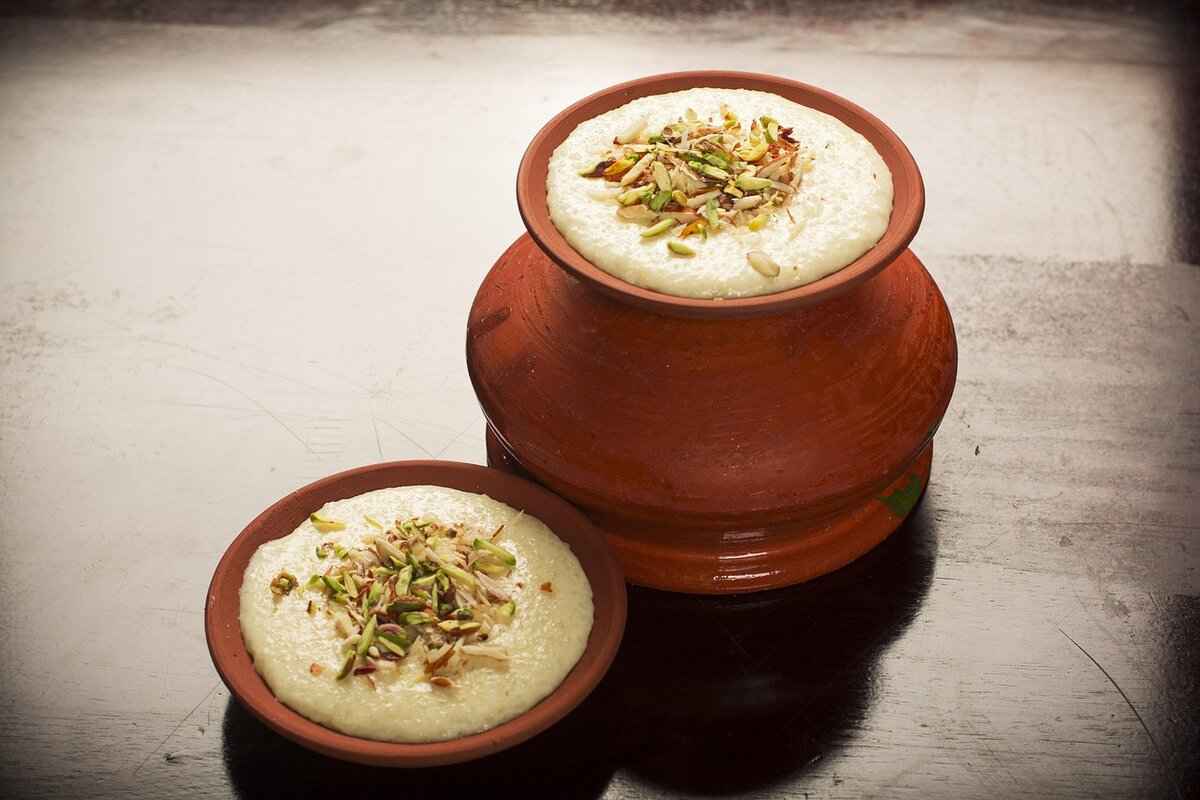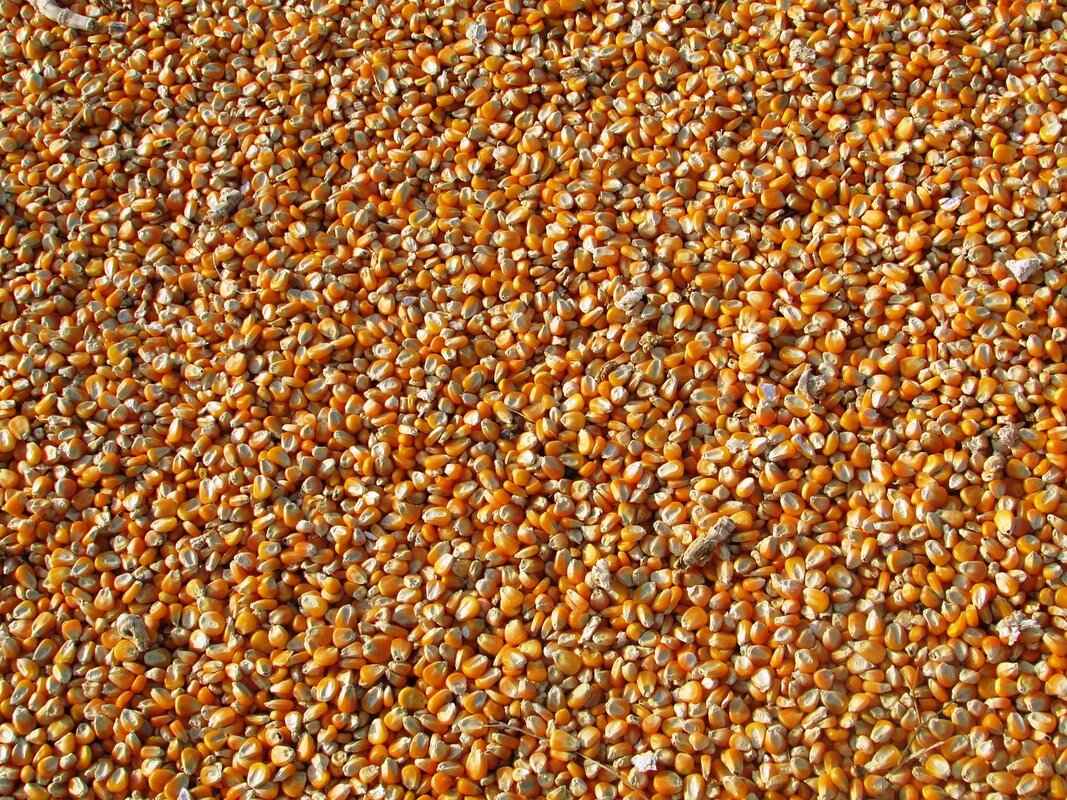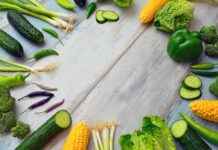Chia Seed Pudding with Coconut Milk is a delightful and nutritious dish that has gained popularity among health enthusiasts. This creamy and delicious recipe not only satisfies your taste buds but also offers a plethora of health benefits. In this article, we will delve into the wonders of chia seed pudding made with coconut milk, exploring its preparation methods, variations, and the health advantages of its key ingredients.
Chia seeds are tiny, nutrient-dense seeds that come from the Salvia hispanica plant. They are packed with fiber, protein, and omega-3 fatty acids, making them an excellent addition to a balanced diet. Their ability to absorb liquid and expand makes them perfect for creating a pudding-like texture.
Coconut milk not only adds a rich, creamy texture to chia seed pudding but also enhances its flavor profile. This dairy-free alternative is ideal for individuals following vegan or lactose-free diets, providing healthy fats without the downsides of dairy.
Incorporating coconut milk into your diet can offer numerous health benefits:
- Heart Health: The medium-chain triglycerides (MCTs) in coconut milk can help improve heart health.
- Enhanced Digestion: Coconut milk is easy to digest and can aid in gut health.
- Weight Management: MCTs may support weight loss by promoting a feeling of fullness.
Making chia seed pudding is incredibly simple and requires just a few ingredients. Here’s a basic recipe to get you started:
Ingredients:- 1/4 cup chia seeds- 1 cup coconut milk- Sweetener of choice (honey, maple syrup, or agave nectar)- Optional flavorings (vanilla extract, cocoa powder)Instructions:1. In a bowl, combine chia seeds and coconut milk.2. Stir in your chosen sweetener and any optional flavorings.3. Let the mixture sit for about 10 minutes, then stir again to prevent clumping.4. Refrigerate for at least 2 hours or overnight until it reaches a pudding-like consistency.
The choice of sweetener can greatly impact the flavor of your chia pudding. Popular options include:
- Honey: Adds a floral sweetness.
- Maple Syrup: Provides a rich, earthy flavor.
- Agave Nectar: A lighter, milder sweetness.
Chia pudding is incredibly versatile. Here are some flavor variations to consider:
- Vanilla Chia Pudding: Add a teaspoon of vanilla extract for a classic flavor.
- Chocolate Chia Pudding: Mix in cocoa powder for a rich chocolate treat.
- Fruit-Infused Pudding: Incorporate fresh fruits like berries or bananas for added sweetness and nutrients.
Chia seed pudding can be enjoyed in various ways:
- Breakfast: Serve it with granola and fresh fruits for a nutritious start to your day.
- Snack: Enjoy it as a healthy afternoon snack.
- Dessert: Top it with whipped cream and chocolate shavings for a guilt-free dessert.
Enhance the visual appeal and flavor of your chia pudding with these garnishing ideas:
- Fresh Fruits: Berries, mango, or kiwi add color and nutrients.
- Nuts and Seeds: Almonds, walnuts, or pumpkin seeds provide crunch.
- Coconut Flakes: For an extra tropical touch.
To keep your chia seed pudding fresh, store it in an airtight container in the refrigerator. It can last for up to five days, making it a convenient option for meal prep.

What Are Chia Seeds?
Chia seeds, often hailed as a superfood, are tiny black or white seeds derived from the Salvia hispanica plant, native to Mexico and Guatemala. These seeds have gained immense popularity in recent years due to their impressive nutritional profile and numerous health benefits. Packed with fiber, protein, and omega-3 fatty acids, chia seeds are a fantastic addition to a balanced diet.
Chia seeds are remarkably nutrient-dense, containing a wealth of essential nutrients in a small serving. Just two tablespoons (28 grams) of chia seeds provide:
- Fiber: Approximately 11 grams, which aids in digestion and promotes a feeling of fullness.
- Protein: About 4 grams, making them an excellent plant-based protein source.
- Omega-3 Fatty Acids: A significant amount of alpha-linolenic acid (ALA), beneficial for heart health.
- Vitamins and Minerals: Including calcium, magnesium, phosphorus, and manganese.
Incorporating chia seeds into your diet can lead to a variety of health benefits. Some of the most notable include:
- Improved Digestive Health: The high fiber content helps regulate bowel movements and supports gut health.
- Heart Health: Omega-3 fatty acids in chia seeds can lower cholesterol levels and reduce inflammation.
- Weight Management: Their ability to absorb water and expand in the stomach can help control appetite.
- Bone Health: The calcium and magnesium in chia seeds contribute to strong bones.
There are countless ways to enjoy chia seeds. Here are some popular methods:
- Chia Seed Pudding: Mix chia seeds with your choice of milk or yogurt, let it sit overnight, and enjoy a creamy treat.
- Smoothies: Add a tablespoon of chia seeds to your favorite smoothie for an extra nutrient boost.
- Baking: Incorporate chia seeds into muffins, breads, or energy bars for added texture and nutrition.
Chia seeds are generally safe for most people. However, it’s important to consume them in moderation. Due to their high fiber content, excessive intake may lead to digestive discomfort. It’s advisable to start with a small amount and gradually increase your intake. Additionally, those with specific allergies should consult a healthcare professional before adding chia seeds to their diet.
In summary, chia seeds are a versatile and nutrient-rich food that can enhance your health in multiple ways. Whether you enjoy them in a pudding, smoothie, or baked goods, their benefits are hard to ignore. By incorporating chia seeds into your daily routine, you can take a significant step towards improving your overall well-being.

Why Use Coconut Milk?
Coconut milk is a versatile and nutritious ingredient that has gained popularity in recent years, especially among those seeking dairy-free alternatives. Its creamy texture and rich flavor make it an ideal addition to various dishes, including the beloved chia seed pudding. But why exactly should you consider using coconut milk in your recipes?
First and foremost, coconut milk adds a rich, creamy texture to chia seed pudding, enhancing its overall flavor profile. This dairy-free alternative is perfect for individuals following vegan or lactose-free diets, ensuring that everyone can enjoy a delicious and satisfying treat. But the benefits of coconut milk extend beyond just flavor.
Coconut milk is not only a tasty addition to your meals, but it also offers a variety of health benefits. It is rich in healthy fats, particularly medium-chain triglycerides (MCTs), which can provide a quick source of energy. These fats are metabolized differently than long-chain fatty acids, potentially aiding in weight management and boosting metabolism.
The MCTs in coconut milk may also contribute to improved heart health. Research suggests that these fats can help increase levels of high-density lipoprotein (HDL) cholesterol, often referred to as the “good” cholesterol. Including coconut milk in your diet can be a flavorful way to support cardiovascular health.
Another significant benefit of coconut milk is its potential to enhance digestion. The healthy fats present in coconut milk can help improve nutrient absorption, while its anti-inflammatory properties may soothe the digestive tract. This makes it a great option for individuals experiencing digestive discomfort.
Integrating coconut milk into your meals is simple and enjoyable. You can use it as a base for chia seed pudding or blend it into smoothies for a creamy texture. Additionally, coconut milk can be used in soups, curries, and desserts, providing a delightful flavor twist.
There are numerous ways to enjoy coconut milk. For instance, you can create a tropical chia seed pudding by adding pineapple or mango. Alternatively, consider making a chocolate version by mixing in cocoa powder and a touch of sweetener. The possibilities are endless, allowing you to customize your dishes according to your taste preferences.
Coconut milk is packed with essential vitamins and minerals, including manganese, copper, and magnesium. These nutrients play vital roles in various bodily functions, such as energy production and bone health. By incorporating coconut milk into your diet, you can enjoy a delicious way to boost your nutrient intake.
The unique flavor profile of coconut milk can elevate your culinary creations. Its natural sweetness pairs well with both sweet and savory dishes, making it a versatile ingredient. Whether you’re making a creamy dessert or a savory curry, coconut milk can enhance the overall taste experience.
In summary, coconut milk is a fantastic ingredient that not only adds a rich, creamy texture to dishes but also provides numerous health benefits. Its versatility makes it suitable for various diets, and it can easily be incorporated into your daily meals. Whether you’re making chia seed pudding or a delicious curry, consider using coconut milk to enhance flavor and nutrition.
Health Benefits of Coconut Milk
Coconut milk is a versatile ingredient that not only enhances the flavor of dishes but also provides a myriad of health benefits. This creamy liquid, extracted from the flesh of coconuts, is rich in nutrients and has been a staple in many cultures for centuries. In this article, we will delve into the significant health benefits of coconut milk, exploring how it can contribute to overall well-being.
Coconut milk is loaded with essential vitamins and minerals. It is particularly high in manganese, copper, and magnesium, which are crucial for various bodily functions. These nutrients support bone health, enhance energy production, and promote a healthy metabolism. Additionally, coconut milk is a source of medium-chain triglycerides (MCTs), a type of fat that is metabolized differently than long-chain fatty acids, providing quick energy and potentially aiding in weight management.
One of the most notable benefits of coconut milk is its potential to improve heart health. The MCTs in coconut milk can help increase levels of good cholesterol (HDL) while lowering bad cholesterol (LDL). This balance is essential for reducing the risk of heart disease. Furthermore, the anti-inflammatory properties of coconut milk may contribute to overall cardiovascular health, making it a heart-friendly option for those looking to enhance their diet.
Coconut milk is also known for its ability to improve digestive health. The healthy fats present in coconut milk can help soothe the digestive tract and promote the absorption of fat-soluble vitamins. Additionally, its antimicrobial properties can combat harmful bacteria in the gut, supporting a healthy microbiome. For individuals suffering from digestive issues, incorporating coconut milk into their diet may provide relief and improve overall gut function.
While it may seem counterintuitive to consume fat for weight loss, the MCTs in coconut milk can actually assist in weight management. These fats are quickly burned for energy rather than being stored, which can help reduce body fat. Furthermore, coconut milk can promote feelings of fullness, reducing overall calorie intake. When used in moderation as part of a balanced diet, coconut milk can be a supportive ally in weight loss efforts.
Another remarkable benefit of coconut milk is its ability to boost the immune system. The lauric acid found in coconut milk has been shown to possess antimicrobial and antiviral properties, which can help protect against infections and diseases. Regular consumption of coconut milk may enhance immune function, making it a valuable addition to any health-conscious diet.
Adding coconut milk to your meals is simple and delicious. It can be used in smoothies, soups, curries, and desserts, providing a rich, creamy texture and a hint of sweetness. For those who are lactose intolerant or following a vegan diet, coconut milk serves as an excellent dairy alternative. Experimenting with coconut milk in various recipes can not only enhance flavor but also boost nutritional content.
In summary, coconut milk is more than just a tasty ingredient; it offers numerous health benefits, including improved heart health, enhanced digestion, weight loss support, and immune system protection. By incorporating this nutrient-dense milk into your diet, you can enjoy its delicious flavor while reaping its many health rewards.
Rich in Nutrients
Coconut milk is a versatile ingredient that has gained popularity in recent years, especially among health enthusiasts. It is not only a delicious addition to various recipes but also a powerhouse of essential nutrients. This article delves into the rich nutritional profile of coconut milk, its benefits, and how it contributes to overall health and wellness.
Coconut milk is packed with a variety of vitamins and minerals, making it a valuable addition to a balanced diet. Some of the key nutrients include:
- Manganese: This mineral plays a crucial role in bone formation, metabolism, and antioxidant defense.
- Copper: Essential for iron absorption and the formation of red blood cells, copper also supports heart health.
- Magnesium: Vital for muscle function, nerve signaling, and energy production, magnesium is important for overall bodily functions.
The nutrients found in coconut milk contribute significantly to various bodily functions:
- Manganese helps in the synthesis of connective tissues and supports the body’s antioxidant defenses, which can protect against chronic diseases.
- Copper is integral to maintaining healthy blood vessels, nerves, and bones, while also aiding in the absorption of iron, which prevents anemia.
- Magnesium is known for its calming effects on the nervous system, promoting better sleep and reducing stress levels.
Incorporating coconut milk into your meals can enhance your overall nutrient intake. Its creamy texture and rich flavor make it a delightful alternative to dairy milk, especially for those who are lactose intolerant or following a vegan diet. Coconut milk can be used in a variety of recipes, from smoothies and soups to desserts and curries, providing not only flavor but also a host of health benefits.
Another significant advantage of coconut milk is its content of medium-chain triglycerides (MCTs). These beneficial fats have been shown to support immune function by providing energy and promoting the growth of healthy bacteria in the gut. A strong immune system is essential for warding off infections and maintaining overall health.
Adding coconut milk to your diet is simple and can be done in numerous ways:
- Use it as a base for smoothies for a creamy texture and added nutrients.
- Incorporate it into your morning oatmeal or cereal for a delicious twist.
- Use coconut milk in soups and stews to enrich flavor and provide a creamy consistency.
- Try it in desserts like puddings or ice creams for a dairy-free option.
While coconut milk offers numerous health benefits, it is important to consume it in moderation. It is high in calories and saturated fats, which can contribute to weight gain if consumed excessively. Choosing light coconut milk or using it sparingly can help mitigate these concerns while still allowing you to enjoy its rich flavor and health benefits.
In conclusion, coconut milk is a nutrient-rich ingredient that can enhance your diet while providing essential vitamins and minerals. By incorporating coconut milk into your meals, you can enjoy its delicious taste while reaping its health benefits. Always remember to balance your diet with a variety of foods to ensure you receive a wide range of nutrients.
Supports Immune Function
The immune system plays a crucial role in protecting our bodies from infections and diseases. One of the lesser-known dietary components that can significantly enhance immune function is coconut milk, particularly due to its rich content of medium-chain triglycerides (MCTs).
MCTs are a type of saturated fat that is metabolized differently than long-chain triglycerides (LCTs). They are rapidly absorbed by the body and converted into energy, making them a quick source of fuel. The unique structure of MCTs allows them to be utilized efficiently, providing numerous health benefits, including immune support.
The immune-boosting properties of MCTs can be attributed to their ability to enhance the body’s defense mechanisms. Here’s how:
- Antimicrobial Properties: MCTs possess natural antimicrobial effects, which can help combat bacteria, viruses, and fungi. This is particularly beneficial for individuals looking to reduce the risk of infections.
- Anti-Inflammatory Effects: Chronic inflammation can weaken the immune system. MCTs have been shown to help reduce inflammation, supporting overall immune health.
- Energy Source for Immune Cells: Immune cells require energy to function effectively. MCTs provide a rapid source of energy, ensuring that these cells can respond promptly to threats.
Incorporating coconut milk into your diet is an excellent way to harness the benefits of MCTs. Unlike other dairy products, coconut milk is dairy-free and suitable for various dietary preferences, including vegan and lactose-free diets. Additionally, it offers a creamy texture and rich flavor, making it a delightful addition to many recipes.
While the immune-boosting properties of coconut milk are impressive, its health benefits extend beyond this single aspect. Some additional advantages include:
- Heart Health: Coconut milk contains healthy fats that can help improve cholesterol levels, contributing to better cardiovascular health.
- Digestive Health: The fats in coconut milk can aid in nutrient absorption and promote a healthy gut.
- Weight Management: MCTs may also help with weight loss by promoting a feeling of fullness and increasing metabolism.
Adding coconut milk to your meals is simple and versatile. Here are some practical ideas:
- Chia Seed Pudding: As mentioned earlier, chia seed pudding made with coconut milk is a nutritious and delicious breakfast or snack option.
- Smoothies: Blend coconut milk with fruits and vegetables for a creamy, nutrient-dense smoothie.
- Curry Dishes: Use coconut milk as a base for curries to add richness and flavor.
In summary, the medium-chain triglycerides found in coconut milk provide significant support for the immune system, making it an excellent choice for maintaining overall health. Its numerous other health benefits further enhance its appeal as a versatile ingredient in various dishes. By incorporating coconut milk into your diet, you can enjoy a delicious way to boost your immune function and overall well-being.
How to Prepare Chia Seed Pudding
Chia seed pudding is a delicious and nutritious treat that has gained popularity for its simplicity and health benefits. This creamy dessert is not only easy to make but also customizable, making it a favorite for many. Below, we delve into the essential steps to prepare chia seed pudding, ensuring you have all the information you need to create this delightful dish.
The process of making chia seed pudding is straightforward and requires just a few minimal ingredients. Here’s how to get started:
- Gather Your Ingredients: You will need chia seeds, coconut milk, a sweetener of your choice, and optional flavorings.
- Mixing: In a bowl or jar, combine 1/4 cup of chia seeds with 1 cup of coconut milk. Stir well to ensure the seeds are evenly distributed.
- Sweetening: Add your preferred sweetener, such as honey or maple syrup, to taste. This step is crucial as it enhances the overall flavor of your pudding.
- Flavoring: For added taste, consider incorporating vanilla extract, cocoa powder, or even a pinch of cinnamon.
- Resting: Cover the mixture and let it sit for at least 2 hours or preferably overnight in the refrigerator. This allows the chia seeds to absorb the liquid and expand, creating a thick, pudding-like consistency.
The resting period is essential as it allows the chia seeds to hydrate and swell, resulting in a creamy texture. If you skip this step, the pudding may not achieve the desired consistency, making it less enjoyable to eat.
Once you master the basic recipe, feel free to experiment with different flavors and ingredients. Here are some ideas:
- Fruit-Infused: Blend fresh fruits like bananas, strawberries, or mangoes into the coconut milk before mixing with chia seeds for a fruity twist.
- Chocolate Delight: Add cocoa powder or melted dark chocolate for a rich chocolate pudding.
- Nutty Flavor: Stir in almond or peanut butter for a nutty taste that complements the chia seeds.
Chia seed pudding can be enjoyed in various ways:
- Breakfast: Serve it as a wholesome breakfast topped with fresh fruits, nuts, or granola.
- Snack: Enjoy it as a healthy snack option throughout the day.
- Dessert: Use it as a guilt-free dessert, garnished with chocolate shavings or coconut flakes.
To keep your chia seed pudding fresh, store it in an airtight container in the refrigerator. It can last up to five days, making it a convenient option for meal prep. Before serving, give it a good stir, as it may thicken further in the fridge.
In summary, preparing chia seed pudding is not only easy but also opens the door to a world of flavor and nutrition. With the right ingredients and a bit of creativity, you can enjoy this versatile dish in numerous ways!

Essential Ingredients for the Recipe
Chia Seed Pudding is a delightful and nutritious dish that has gained immense popularity in recent years. It is not only easy to prepare but also offers a plethora of health benefits. At the heart of this creamy treat are a few essential ingredients that work together to create a delicious and satisfying dessert or snack. In this article, we will explore the primary ingredients for chia seed pudding, highlighting their unique contributions to the dish.
The primary ingredients for chia seed pudding include chia seeds, coconut milk, a sweetener, and optional flavorings. Each ingredient plays a vital role in determining the overall taste and texture of the pudding.
- Chia Seeds: These tiny seeds are the star of the show. When soaked in liquid, they expand and form a gel-like consistency, giving the pudding its unique texture. Chia seeds are also rich in omega-3 fatty acids, fiber, and protein, making them a powerhouse of nutrition.
- Coconut Milk: This creamy liquid adds a rich texture and a hint of sweetness to the pudding. It is a fantastic dairy-free alternative, suitable for those following vegan or lactose-free diets. Coconut milk is also packed with healthy fats that can promote heart health.
- Sweetener: The choice of sweetener can greatly impact the flavor profile of your chia seed pudding. Popular options include honey, maple syrup, and agave nectar. Each sweetener provides a unique taste, allowing you to customize your pudding to your liking.
- Optional Flavorings: To enhance the flavor of your pudding, consider adding extracts such as vanilla or almond, or incorporating ingredients like cocoa powder or fresh fruits. These additions can elevate the dish and make it even more enjoyable.
When combined, these ingredients create a delightful pudding that is not only delicious but also packed with nutrients. The chia seeds provide a satisfying texture, while the coconut milk adds creaminess and flavor. The sweetener and flavorings allow for personalization, ensuring that each serving can be tailored to individual preferences.
Making chia seed pudding is a straightforward process that requires minimal effort. Begin by combining chia seeds and coconut milk in a mixing bowl. Stir well to ensure that the seeds are evenly distributed throughout the liquid. Allow the mixture to sit for about 10-15 minutes, during which time the chia seeds will absorb the liquid and expand. For a smoother consistency, you can blend the mixture before refrigerating it.
Once the pudding has thickened, you can stir in your choice of sweetener and any optional flavorings. Transfer the pudding to serving containers and refrigerate for at least 2 hours or overnight for best results. This allows the flavors to meld and the pudding to reach its ideal texture.
Chia seed pudding is incredibly versatile and can be enjoyed in various ways. It makes for a nutritious breakfast, a satisfying snack, or even a healthy dessert. Top your pudding with fresh fruits, nuts, or seeds to add an extra layer of flavor and texture. Consider garnishing with a sprinkle of cinnamon or a drizzle of honey for added sweetness.
In conclusion, the essential ingredients for chia seed pudding are simple yet powerful. By understanding the role of each ingredient, you can create a delicious and nutritious dish that aligns with your taste preferences and dietary needs. Whether you enjoy it as a breakfast option or a delightful dessert, chia seed pudding is sure to satisfy your cravings while providing numerous health benefits.
Choosing the Right Sweetener
When it comes to creating the perfect chia seed pudding, the choice of sweetener can significantly impact the overall flavor and enjoyment of the dish. Selecting the right sweetener is not just about sweetness; it’s about enhancing the pudding’s taste profile and complementing the other ingredients. In this section, we will explore various sweetener options, their unique characteristics, and how they can transform your pudding experience.
There are numerous sweeteners available, each offering its own distinct flavor and health benefits. Here are some popular options:
- Honey: A natural sweetener with a rich flavor, honey adds a delightful sweetness along with antioxidants and antibacterial properties. It is best used in moderation due to its high sugar content.
- Maple Syrup: This syrup provides a unique, earthy sweetness that pairs beautifully with coconut milk. It is rich in minerals like manganese and zinc, making it a nutritious choice.
- Agave Nectar: Known for its low glycemic index, agave nectar is sweeter than honey and maple syrup, allowing you to use less. Its mild flavor makes it a great option for those looking to keep the focus on other ingredients.
- Coconut Sugar: Derived from the sap of coconut palm trees, this sugar has a caramel-like flavor and retains some nutrients found in the coconut. It’s a great alternative for those seeking a less processed sweetener.
- Stevia: A zero-calorie sweetener derived from the leaves of the stevia plant, it is perfect for those looking to reduce sugar intake. However, its intense sweetness can overpower other flavors, so use it sparingly.
Understanding how each sweetener interacts with the other ingredients in your chia seed pudding is essential for achieving the desired taste:
- Honey adds depth and warmth, making it ideal for autumn-inspired puddings.
- Maple syrup can enhance the nuttiness of chia seeds, creating a comforting flavor profile.
- Agave nectar blends seamlessly, allowing the coconut milk and chia seeds to shine.
- Coconut sugar introduces a hint of caramel, enhancing the richness of the pudding.
- Stevia provides sweetness without calories but may require balancing with other flavors to avoid bitterness.
When selecting a sweetener, consider the following factors:
- Dietary Restrictions: If you are vegan or avoiding certain sugars, opt for options like agave nectar or stevia.
- Flavor Preferences: Consider what flavor profile you want to achieve. Sweeteners like honey and maple syrup add distinct flavors, while agave and stevia are more neutral.
- Health Goals: If you are watching your sugar intake, low-glycemic options like agave or stevia may be preferable.
Ultimately, the choice of sweetener is a personal one, and experimenting with different types can lead to delightful discoveries. Don’t hesitate to mix and match sweeteners to find your perfect blend!
Flavor Variations to Try
Chia seed pudding is not only a nutritious option but also a blank canvas for flavor experimentation. By incorporating various ingredients, you can transform a simple dish into a delightful culinary experience. Here are some exciting flavor variations to elevate your chia seed pudding.
Experimenting with different flavors allows you to customize your chia pudding according to your taste preferences. Adding new elements can enhance the dish’s nutritional profile and keep your meals interesting. Here are some popular flavor enhancements:
Adding a splash of vanilla extract can introduce a warm, aromatic quality to your pudding. This classic flavor pairs beautifully with the creaminess of coconut milk, making it a favorite among many.
If you have a sweet tooth, consider incorporating cocoa powder. This rich addition not only provides a chocolatey flavor but also adds antioxidants to your pudding. Mix in a tablespoon or two, depending on your preference, for a delicious chocolate chia pudding.
Fresh fruits are an excellent way to add natural sweetness and vibrant colors to your chia pudding. Try mixing in berries, banana slices, or mango chunks. These fruits not only enhance the flavor but also provide essential vitamins and minerals.
For a creamy texture and a protein boost, add a spoonful of your favorite nut butter. Almond butter, peanut butter, or cashew butter can create a rich, indulgent flavor that satisfies hunger while enriching your pudding with healthy fats.
Spices can add depth and warmth to your chia pudding. Consider incorporating cinnamon, nutmeg, or ginger for unique flavor profiles. A sprinkle of cinnamon can enhance the sweetness without added sugar, making it a perfect choice for those watching their sugar intake.
Adding a bit of citrus zest, such as lemon or orange, can brighten up your chia pudding. The acidity from the citrus balances the creaminess of the coconut milk, creating a refreshing and invigorating treat.
For those who love the flavor of coconut, mixing in some unsweetened coconut flakes can enhance the tropical feel of your pudding. This addition not only boosts the coconut flavor but also adds a delightful texture.
While chia seed pudding can be naturally sweetened with fruits, you might want to add a touch of honey, maple syrup, or agave nectar for extra sweetness. These natural sweeteners can complement the flavors you choose and provide a balanced taste.
Feel free to mix and match these flavor variations to create your perfect chia seed pudding. For example, you might combine cocoa powder with banana slices and almond butter for a decadent dessert. The possibilities are endless, and the key is to have fun experimenting!
Flavor variations can significantly enhance your chia seed pudding experience. By incorporating different ingredients, you can tailor this nutritious dish to suit your preferences, ensuring that it remains a staple in your healthy eating routine. So, gather your ingredients and start experimenting today!

Serving Suggestions for Chia Seed Pudding
Chia seed pudding is not just a trendy health food; it’s a versatile dish that can be enjoyed in numerous ways. Whether you are seeking a nutritious breakfast, a satisfying snack, or a delightful dessert, chia seed pudding fits the bill perfectly. This article delves into various serving suggestions that cater to different tastes and preferences, ensuring you can enjoy this superfood in a way that suits your lifestyle.
Chia seed pudding is incredibly adaptable due to its base ingredients and the variety of toppings and flavorings available. The pudding itself has a neutral taste, allowing it to pair well with both sweet and savory additions. Here are some popular ways to serve chia seed pudding:
- Breakfast Bowl: Start your day with a hearty breakfast by adding your favorite fruits, nuts, and seeds. Consider topping your chia pudding with sliced bananas, berries, or a sprinkle of granola for added crunch.
- Midday Snack: For a quick pick-me-up, enjoy chia pudding as a snack. Pair it with a dollop of nut butter or a sprinkle of cinnamon for an energy boost that will keep you full until dinner.
- Decadent Dessert: Transform your chia pudding into a delicious dessert by incorporating ingredients like cocoa powder for chocolate flavor or layering it with a fruit compote. This makes for an indulgent yet healthy treat.
To elevate the experience of eating chia seed pudding, consider the following garnishing ideas:
- Fresh Fruits: Top your pudding with seasonal fruits such as mango, kiwi, or passion fruit for a refreshing touch.
- Nuts and Seeds: Add a handful of almonds, walnuts, or pumpkin seeds for extra texture and a boost of healthy fats.
- Sweeteners: Drizzle honey, maple syrup, or agave nectar over the top to enhance sweetness according to your preference.
Don’t hesitate to experiment with flavors to keep your chia seed pudding exciting. Here are some creative ideas:
- Vanilla Almond: Mix in vanilla extract and top with toasted almonds for a classic flavor combination.
- Chocolate Delight: Stir in cocoa powder and sweeten to taste for a rich chocolate pudding.
- Coconut Tropical: Use coconut milk as a base and add shredded coconut and pineapple for a tropical twist.
To maintain the freshness of your chia seed pudding, proper storage is essential. Follow these guidelines:
- Airtight Containers: Store your pudding in an airtight container to prevent it from absorbing odors from the fridge.
- Refrigeration: Keep your chia pudding refrigerated for up to five days, ensuring you enjoy it at its best.
In summary, chia seed pudding is a flexible and nutritious dish that can be served in various ways. With its ability to cater to different meal times and preferences, it’s no wonder that this dish has become a staple for health enthusiasts. By incorporating various toppings, flavors, and proper storage methods, you can enjoy chia seed pudding in a way that fits seamlessly into your daily routine.
Garnishing Ideas
Enhancing your chia seed pudding with the right toppings not only boosts its visual appeal but also elevates its flavor profile and nutritional value. The possibilities are endless when it comes to garnishing your pudding, allowing you to create a unique dish that caters to your personal taste. Below are some exciting and delicious garnishing ideas that you can try.
- Fresh Fruits: Adding fresh fruits is one of the simplest ways to enhance your chia pudding. Fruits like berries, bananas, and mangoes not only add color but also provide natural sweetness and a burst of flavor. For a tropical twist, consider using pineapple or kiwi.
- Nuts and Seeds: Incorporating a variety of nuts and seeds can add a delightful crunch to your pudding. Almonds, walnuts, and pumpkin seeds are excellent choices. They not only enhance the texture but also provide healthy fats and protein, making your pudding even more nutritious.
- Granola: For those who enjoy a bit of crunch, sprinkling some granola on top of your chia pudding can make for a satisfying breakfast or snack. Choose a granola that is low in added sugars for a healthier option.
- Nut Butters: A drizzle of almond butter or peanut butter can add a rich, creamy texture and a dose of healthy fats. This combination not only enhances the flavor but also keeps you feeling full longer.
- Spices and Flavorings: Don’t underestimate the power of spices! A sprinkle of cinnamon or nutmeg can add warmth and depth to your pudding. Additionally, consider adding a splash of vanilla extract or a dash of cocoa powder for a different flavor experience.
- Yogurt: For added creaminess, consider topping your chia pudding with a dollop of Greek yogurt. This not only enhances the texture but also adds a protein boost, making it a more satisfying meal.
- Dark Chocolate: If you’re looking for a decadent touch, consider adding some dark chocolate shavings or chips. This addition can transform your chia pudding into a dessert-like treat.
Each of these toppings brings its own unique flavor and texture to your chia pudding, making it a versatile dish that can be tailored to suit your preferences. Whether you’re in the mood for something fruity, crunchy, or indulgent, there’s a combination for everyone.
Moreover, garnishing your chia pudding is not just about taste; it can also be a fun and creative way to present your dish. Play around with different combinations, and don’t hesitate to mix and match toppings to discover your favorite blend. With the right garnishes, your chia seed pudding can become a delightful centerpiece for any meal, whether it’s breakfast, a snack, or dessert.
So, next time you prepare your chia pudding, remember that the right toppings can take your dish from simple to extraordinary. Enjoy experimenting with these ideas and watch your chia pudding become a beloved go-to recipe!
Storage Tips for Leftovers
When it comes to enjoying your chia seed pudding, proper storage is crucial to preserve its quality and flavor. After preparing this delightful dish, you want to ensure that it remains fresh and delicious for as long as possible. Here are some essential tips for storing your chia seed pudding effectively.
Storing your chia seed pudding correctly not only helps maintain its taste and texture but also ensures that you get the full health benefits of the ingredients. Chia seeds can absorb moisture and flavors from their environment, which can compromise the pudding’s quality if not stored properly.
To keep your chia seed pudding fresh, always use an airtight container. This prevents air from entering and helps avoid any unwanted odors or flavors from affecting your pudding. Glass containers are an excellent choice, as they are non-reactive and do not absorb flavors.
Once prepared, your chia seed pudding should be stored in the refrigerator. The cold temperature slows down the growth of bacteria and helps maintain the pudding’s creamy consistency. Ideally, consume your pudding within five days for the best taste and texture.
To keep track of when your pudding was made, consider labeling your containers with the date. This simple step can help you remember when it’s time to enjoy or discard your leftovers, ensuring you always consume them at their best.
If you want to store your chia seed pudding for an extended period, freezing is an option. Portion the pudding into smaller containers or ice cube trays for easy serving later. When you’re ready to enjoy it, simply thaw it in the refrigerator overnight. However, be mindful that the texture may slightly change after freezing, so it’s best to consume thawed pudding within a few days.
Before consuming leftover chia seed pudding, always check for any signs of spoilage. If you notice any off smells, unusual textures, or discoloration, it’s best to err on the side of caution and discard the pudding.
Leftover chia seed pudding can be a versatile treat. You can enjoy it as a quick breakfast, a satisfying snack, or even as a dessert. Get creative by adding new toppings or mix-ins, such as fresh fruits, nuts, or a drizzle of honey, to give your leftovers a fresh twist.
By following these storage tips, you can ensure that your chia seed pudding remains fresh, flavorful, and packed with nutrients, allowing you to enjoy this healthy treat to the fullest!
Frequently Asked Questions
- What are the health benefits of chia seeds?
Chia seeds are a powerhouse of nutrients! They are rich in fiber, protein, and omega-3 fatty acids, which can help improve digestion, support heart health, and promote weight loss. Plus, they keep you feeling full longer!
- Can I use other types of milk instead of coconut milk?
Absolutely! While coconut milk gives a creamy texture and delicious flavor, you can use almond milk, soy milk, or oat milk as alternatives. Just remember, each type will slightly change the taste and consistency of your pudding.
- How long can I store chia seed pudding?
You can store your chia seed pudding in an airtight container in the refrigerator for up to five days. Just make sure to give it a good stir before serving, as it may thicken over time!
- What sweeteners work best for chia seed pudding?
It really depends on your taste! Honey, maple syrup, and agave nectar are popular choices. Each sweetener adds its own unique flavor, so feel free to experiment to find your favorite!
- Can I add fruits to my chia seed pudding?
Definitely! Fresh fruits like berries, bananas, or mangoes not only enhance the flavor but also add extra nutrients. Mix them in or use them as a topping for a beautiful presentation!














